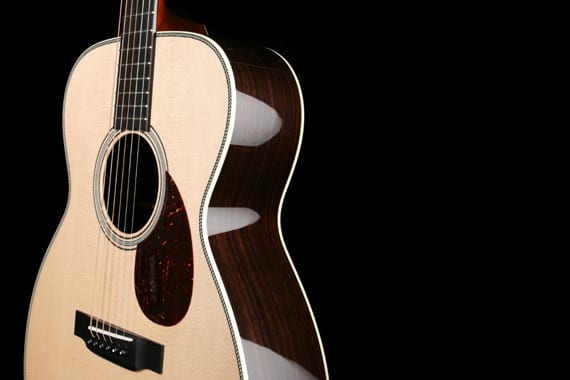 The weekend is over, and for some of us, it’s time to turn off the Christmas music and go back to reality. And for those of you who received instruments or music equipment for the holidays, it’s time to schedule your music lessons and start practicing!
The weekend is over, and for some of us, it’s time to turn off the Christmas music and go back to reality. And for those of you who received instruments or music equipment for the holidays, it’s time to schedule your music lessons and start practicing!
The guitar is a popular gift to give around this time, but it can be a daunting thing for a beginner. While you may be already making a mental list of songs you’d like to learn, where do you start? What can you expect from your first guitar lesson?
Your lessons will vary depending on your teacher and your own personal goals and interests. To get an idea, here are some common topics that a beginner guitar teacher may cover, from UltimateGuitar.com:
Reading Standard Music Notation and Tablature
Learning to read music is not as hard as it seems and will definitely make the rest of your learning experience much easier. The notation is just the information about how to perform a piece of music. Without it, it’s similar to working to set up an item of furniture without being able to read the instructions. You could eventually figure it out, but it really will be more difficult and take longer than it should.
General Music Theory
You might think it’s a little premature to do this, but it’s definitely not. Music theory is a thing that you’ll work with throughout the entire process. It’s just like mastering the grammar of music. By knowing how the music is put together, you will have enough knowledge to apply that knowledge to each and every new tune that you learn.
Here is a good short list of basic theory concepts you should to get to:
– How chords are built
– Tension and release
– What a “key” is
– Chord relationships
– Half, Authentic, and Plagal cadences
– Intervals
Strumming Rhythms
It is useless having chords if you do not have any rhythms to go along with all of them, right? You can begin with a few basic quarter note/eighth note rhythms and then extend into sixteenth notes plus syncopations. Work your rhythms initially with one chord, and after that begin using pairs of chords to rehearse changing them proficiently. You’ll go on to learn and invent rhythm styles in the course of your studies.
Position Playing
Position playing means being able to perform melodies higher up on the neck of the guitar than the open position. Once you have a few major and pentatonic scales under your digits, this won’t be that tough.
Pentatonic Scales
Typical teaching would have you master major scales to begin with. But for the guitar player, pentatonic scales are usually a lot more immediately useful. Just like anything, don’t try and learn all the stuff at once.
Major Scales
Same as with the pentatonics, you’ll want to work with a single form here. And when you know some major patterns, they may be slightly modified to turn into various other important scales as well. Always consider the way the newer thing you are studying works with the old things you mastered.
Minor Scales
Your minor scales are based on the major patterns you learned in the past. Here you will want to get to know the natural, harmonic, and melodic minors.
Image courtesy of http://www.collingsguitars.com/
Suzy S.
